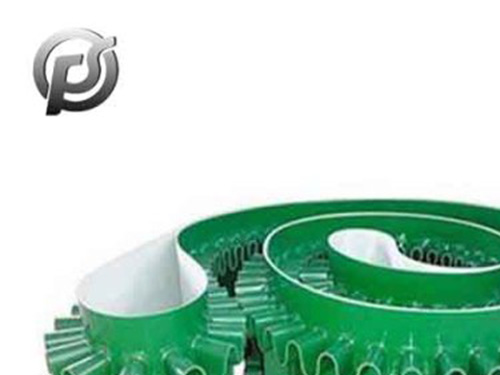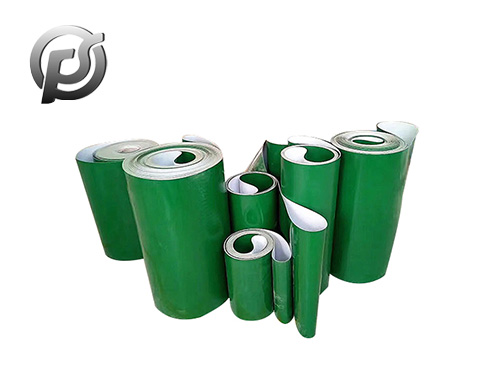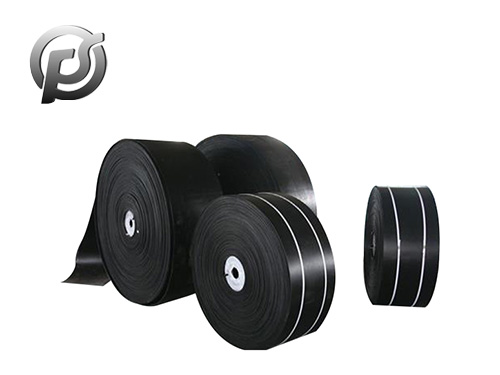Three, hot vulcanization joint method
The hot vulcanization joint method is to realize the
conveyor belt joint by heating and pressurizing the conveyor belt vulcanization machine.
This method is suitable for large conveying equipment, is a relatively ideal joint method at present, can make the conveyor belt joint parts are completely sealed, not affected by moisture, long service life, stable operation of the conveyor belt.
Hot vulcanized joint method is often used for steel wire conveyor belt, layered nylon conveyor belt, PVG whole core flame retardant conveyor belt joints.
Manufacturing specifications and steps of steel wire conveyor belt joints:
Pre-construction preparation
1. Understand the characteristics of conveyor belt and site construction, and take protective measures against rain, fog, dust and other special environment. Do a good job of cleaning the work area before construction, to ensure that the work area is smooth, clean and wide.
2. Prepare construction equipment, including working platform, conveyor belt vulcanizing machine, pressure pump, RIT core glue, RIT surface glue, hot vulcanizing agent SK823, cooling water source, Angle grinder, steel tape measure, square, wire cutters, brush, hair dryer, etc.
3. Conveyor belt traction fixation and centering
3.1. First pull the conveyor belt that needs to make joints into place, so that the joints of the conveyor belt overlap, and the overlapping part is greater than or equal to the length of the joint.
3.2. Lap joint platform, the length of the platform is at least three times the length of the joint, the width is slightly wider than the vulcanizing machine plate, the surface of the platform and the surface of the heating plate under the vulcanizing machine is on the same plane.
3.3. The conveyor belt vulcanization machine is placed in the order from bottom to top: aluminum alloy channel steel, water pressure plate, heat insulation plate, heating plate.
3.4. The straightness of conveyor belt joint directly affects the joint effect. The center line of the belt must be determined according to the three points of the width of the conveyor belt.
4. Confirm the joint direction of the conveyor belt. Generally, the joint direction is consistent with the running direction of the conveyor belt.
5. Conveyor belt cutting, grinding and cleaning
5.1. Calculate the length of the joint according to the technical parameters of the joint, and measure the position of each line in turn.
5.2. Use a knife to cut the covering glue on both sides of the conveyor belt in a transverse way. The depth is close to the steel wire rope, and polish the surface and transition area of the steel wire rope into a rough shape with a steel wire wheel.
5.3. Polish the rubber at the root of the steel wire into a slope with an Angle grinder, about 100mm wide, and then polish 150mm outward along the slope, and polish the rubber glue attached to the steel wire as far as possible.
5.4. Wash the sundries with detergent SK353 and dry them with a hair dryer.
6. Joint and forming
6.1. Lay a layer of vulcanized paper on the surface of the heating plate first, and then RIT surface adhesive and RIT core adhesive in turn. The joint of the two shall be coated with hot vulcanizing agent SK823, and the material shall be consistent with the inclined plane of the joint at both ends when laying.
6.2. Brush the steel wire once with hot curing agent SK823, and then lapped the steel wire according to the requirements. When brushing hot curing agent SK823, it should be uniform.
6.3. The upper part of the steel wire is paved with RIT core glue and RIT surface glue, and the joint of the two should be brushed with hot vulcanizing agent SK823. The material is also made to fit the rubber inclined plane at both ends. Finally, a layer of vulcanized paper is laid flat to complete the laying of the steel wire core conveyor belt joint and the lap of the steel wire.
7, conveyor belt vulcanization machine installation
7.1. After the joint parts of the steel wire rope core conveyor belt are made according to the technology, tighten the joints on both sides of the conveyor belt with tightening iron.
7.2. Close the upper heating plate, place the heat insulation plate, put the aluminum alloy channel steel and start to pre-tighten the bolts. Tighten the bolts when the tightening iron is close to both sides of the conveyor belt.
7.3. Press the pressure of the water pressure plate to 1.0MPa, keep the connection between the water inlet pipe and the water pressure pump, observe the pressure change of the water pressure plate at any time, and make up the pressure in time if there is pressure loss in the intermediate process.
8. Vulcanization and cooling
8.1, when ready, make a careful inspection of the parts, confirm that there is no problem, you can give the vulcanizing machine electrical vulcanization.
8.2. The set temperature of the heating power supply is 140 ~ 150℃. When vulcanization begins, the water pressure is pressed to 1MPa. When the vulcanization is heated to 100℃, the pressure is continued to 1.4MPa.
8.3. When the temperature of vulcanizing machine rises to 140-145℃, start to hold heat for 20min. When the curing time is up, cut off the heating power supply and keep the temperature and water pressure measured.
8.4 When the temperature of vulcanizing machine cools to 80℃ naturally, cut off the power supply, remove the power cord, water pressure pump, etc., and carry out mold setting, check and dressing.
Conclusion: Hot vulcanization joint method can be applied to any material of conveyor belt, the joint parts using RIT core glue, RIT surface glue with hot vulcanizing agent SK823 after vulcanization machine vulcanization, can be integrated with the conveyor belt rubber. But the hot vulcanization joint needs professional equipment, and the operation time is long, the cost is high.
As far as the current practical application is concerned, these three conveyor belt joint methods have advantages and disadvantages. Users should identify and choose the appropriate joint method according to the actual situation of their own enterprises.
 Stone Conveyor Belt: Enhancing Efficiency and Productivity in Material Handling
Stone Conveyor Belt: Enhancing Efficiency and Productivity in Material Handling
 Optimizing Operations with PE Conveyor Belts: Durability, Efficiency, and Versatility
Optimizing Operations with PE Conveyor Belts: Durability, Efficiency, and Versatility
 Exploring the Efficiency and Versatility of Light Conveyor Belts
Exploring the Efficiency and Versatility of Light Conveyor Belts